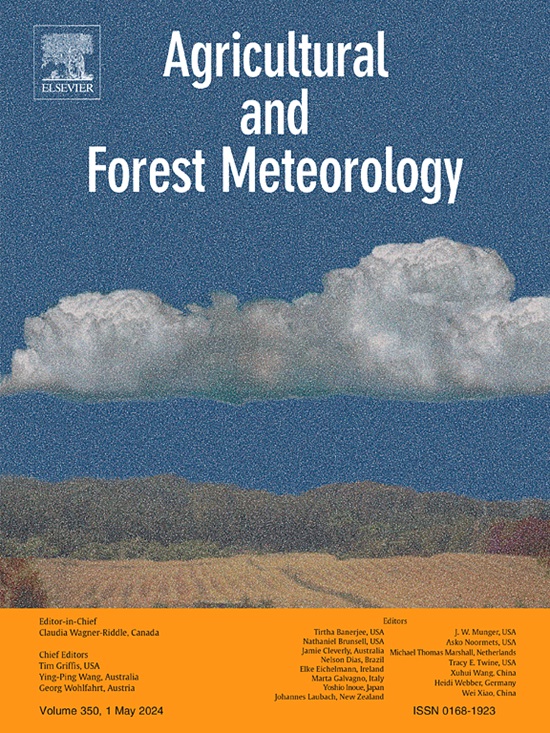Coupling crop growth models and machine learning for scalable winter wheat yield estimation across major wheat regions in China
IF 5.6
1区 农林科学
Q1 AGRONOMY
引用次数: 0
Abstract
The temperate continental climate, with its combination of ample sunlight and relatively low humidity during key growth stages, provides favorable conditions for wheat cultivation, reducing disease risks and supporting efficient grain filling. However, spatial heterogeneity in soil properties, crop varieties, and agronomic practices complicates large-scale yield prediction. This study focuses on China, the world's largest wheat producer, to develop an adaptable method for estimating yields in major wheat-growing regions. We coupled the WOFOST model with HYDRUS and CASA to simulate crop growth, soil moisture, and carbon cycling, assimilated remote sensing data for model calibration, and trained a machine learning model using multi-modal data to predict regional-scale winter wheat yields. The model, combining a Bagging Regressor with total above ground production (TAGP), gross primary productivity (GPP), and evapotranspiration (ET), achieved optimal performance (R = 0.83, RRMSE = 0.12) and reduced prediction errors compared to Global-WheatYield4km, with an average error of 1.92%. The model also reliably predicted yields across varying conditions, with discrepancies under 1,000 kg/ha in most counties. This integrated approach enhances yield prediction stability and precision, offering a solid foundation for regional-scale agricultural management.
结合作物生长模型和机器学习估算中国主要小麦产区冬小麦产量
温带大陆性气候在关键生育期日照充足,湿度相对较低,为小麦种植提供了有利条件,降低了病害风险,支持高效灌浆。然而,土壤性质、作物品种和农艺实践的空间异质性使大规模产量预测复杂化。本研究以世界上最大的小麦生产国中国为研究对象,旨在开发一种适用于估算主要小麦产区产量的方法。我们将WOFOST模型与HYDRUS和CASA相结合,模拟作物生长、土壤湿度和碳循环,同化遥感数据进行模型校准,并使用多模态数据训练机器学习模型来预测区域尺度的冬小麦产量。与Global-WheatYield4km模型相比,该模型将Bagging回归因子与地上总产量(TAGP)、总初级生产力(GPP)和蒸散量(ET)相结合,获得了最佳的预测效果(R = 0.83, RRMSE = 0.12),平均误差为1.92%。该模型还可靠地预测了不同条件下的产量,大多数县的差异在1000公斤/公顷以下。这种综合方法提高了产量预测的稳定性和精度,为区域尺度的农业管理提供了坚实的基础。
本文章由计算机程序翻译,如有差异,请以英文原文为准。
求助全文
约1分钟内获得全文
求助全文
来源期刊
CiteScore
10.30
自引率
9.70%
发文量
415
审稿时长
69 days
期刊介绍:
Agricultural and Forest Meteorology is an international journal for the publication of original articles and reviews on the inter-relationship between meteorology, agriculture, forestry, and natural ecosystems. Emphasis is on basic and applied scientific research relevant to practical problems in the field of plant and soil sciences, ecology and biogeochemistry as affected by weather as well as climate variability and change. Theoretical models should be tested against experimental data. Articles must appeal to an international audience. Special issues devoted to single topics are also published.
Typical topics include canopy micrometeorology (e.g. canopy radiation transfer, turbulence near the ground, evapotranspiration, energy balance, fluxes of trace gases), micrometeorological instrumentation (e.g., sensors for trace gases, flux measurement instruments, radiation measurement techniques), aerobiology (e.g. the dispersion of pollen, spores, insects and pesticides), biometeorology (e.g. the effect of weather and climate on plant distribution, crop yield, water-use efficiency, and plant phenology), forest-fire/weather interactions, and feedbacks from vegetation to weather and the climate system.

 求助内容:
求助内容: 应助结果提醒方式:
应助结果提醒方式:


